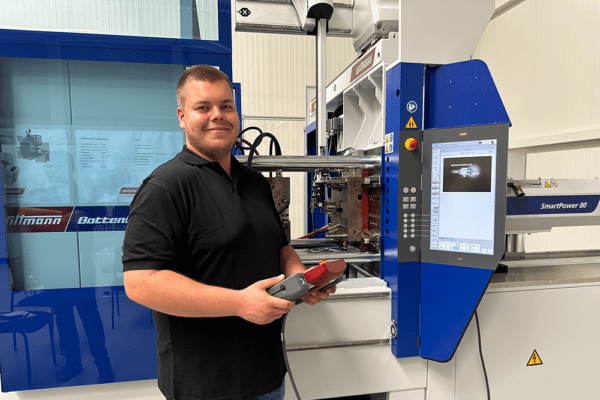
Clean Room Optimised Take-Out-Systems (TOSs) for Diabetes Care Disposables
|
Getting your Trinity Audio player ready...
|
With its Side entry CORVI IM platform, MA micro automation enables the energy-efficient production of 128 medical components for needle hubs per injection moulding cycle on a minimised footprint. An optical 100 percent in-line on the fly inspection is integrated.
When the CORVI IM project was launched in December 2022, it was clear that the agreed delivery time would be ambitious, given the last stages of the COVID-19 pandemic, the onset of current crises and ongoing supply bottlenecks in the semiconductor sector.
“The time frame was more than challenging,” recalls Daniel Leinert, Senior Account Manager of Medical Devices. “Nevertheless, MA micro automation, St. Leon-Rot, and the customer RKT (Rodinger Kunststoff-Technik) succeeded in commissioning the first three automation systems for a large global OEM in the area of diabetes care in Q1 2024 with 100% availability. The key was strategic planning for the purchased parts and a very cooperative partnership.”
Visual “on the fly” inspection
The basis for CORVI IM is the linear axis developed by MA micro automation (MA) itself, which was scaled to the part take-out of 128 cavities. MA is the only supplier in Europe that manufactures its own high-speed take-out-axis with a Linear-motor drive. When the tool opens, the EOAT-gripper removes the 128 manufactured products laterally with a repetition accuracy of +/-0.02 mm – depending on the mould either hubs or the associated caps and containers. These are arranged in rows or circular with four or eight nests in each cluster.
The unloading unit passes through a sensor bridge on which laser sensors are mounted. These check that all parts have been removed. Sensors have already checked the gap dimension between the EOAT-removal gripper and the injection moulding tool. This ensures that the transfer has been fully completed. This is done out of caution because if just one part remained in the multi-cavity mould tool, this could cause massive mould damage.
The 100 % optical vision inspection of the hubs follows on the fly. To enable the glueing process of the needle in a separate production step, the plastic part must have a correspondingly dimensioned opening. This is ensured by highly dynamic image processing as well as general technical parameters. If the opening is missing – for example, because a core is broken in the mold tool – the cavity is blocked, so that no NOK parts are transferred to the big back station.
The end user runs the CORVI IM in a clean room 7 class – however, the components of the linear axis would be compatible up to class 5. The parts are produced for a major global player in the field of diabetes care with production facilities on several continents – which can be supported by MA with its subsidiaries in Singapore and the USA.

High Quality Automation Systems
The CORVI IM platform is adaptable for various applications from medical device production to moulding of packaging, containers and caps etc. with different axis configurations. The platform offers the best ROI through high output per sqm, low life-cycle costs and low energy consumption. Moreover, with decades of specialisation in the medical technology sector, MA designs systems with the lowest possible particle content.
For this 128-cavity application, the cycle time is between 5.9 and 6.5 s, depending on the part, considering the cooling time of the injection moulding process as being the limiting factor. However, the system is designed to offer take-out times as low as 180ms for small cavitation moulds.
While delivering supreme performance, the linear technology used consumes up to 30% less energy than belt-driven systems and is extremely low-wear and low-maintenance. In the factory and site acceptance tests (FAT/SAT) over eight-hour periods, the availability of the automation systems is between 98 to 100%.
The CORVI IMs follow the minmax principle: minimum space and energy consumption with maximum part yield. Coupled with longevity, which all MA automation systems are designed for, this enables efficient and sustainable production with the highest ROI.
MA micro automation
+49 6227 3412 0
Website
Email
Get more news from our automation & robotics partners here.






